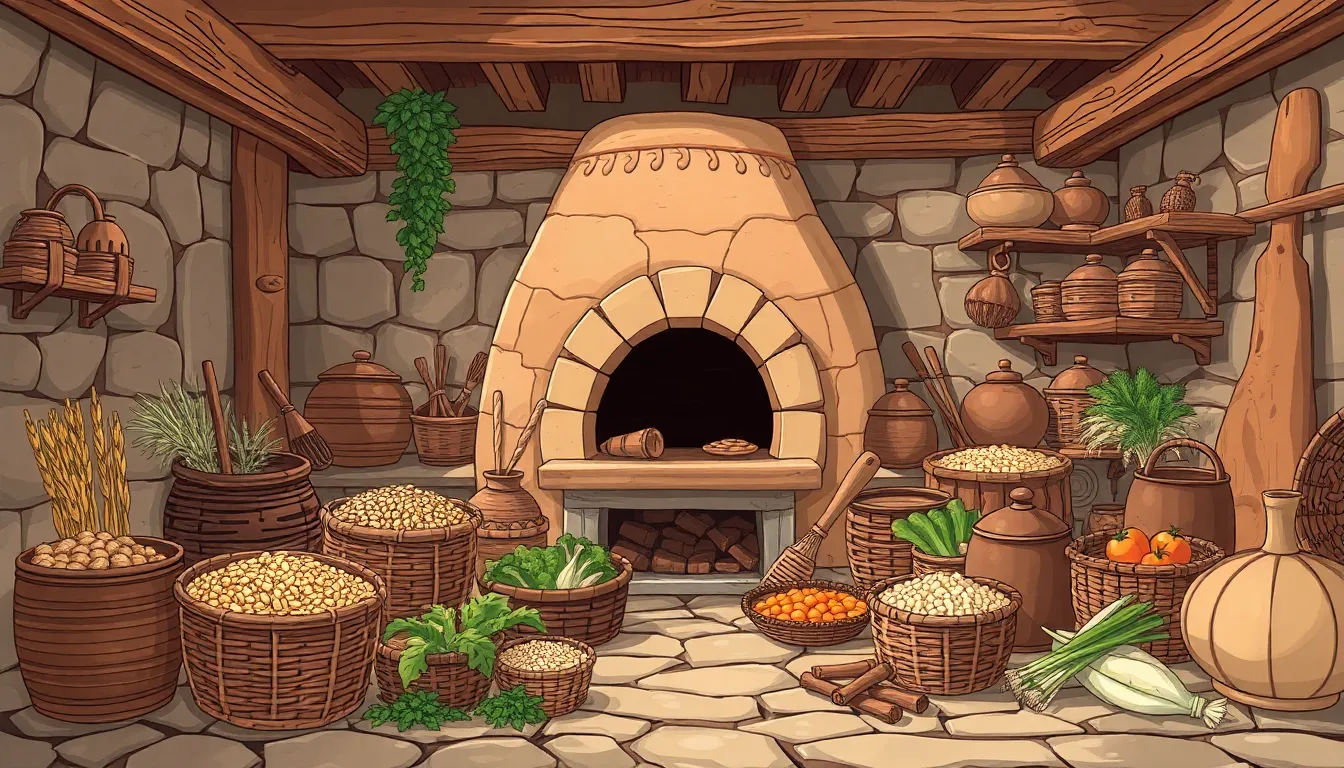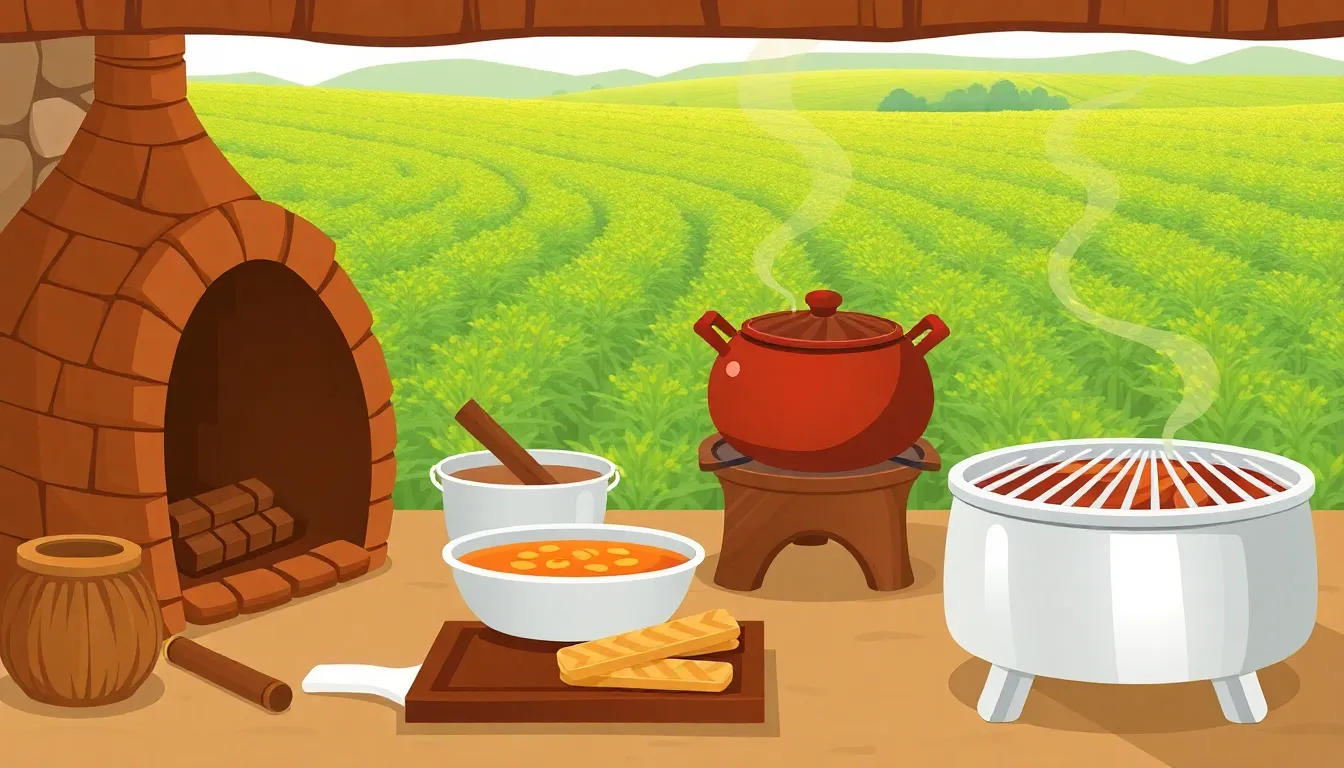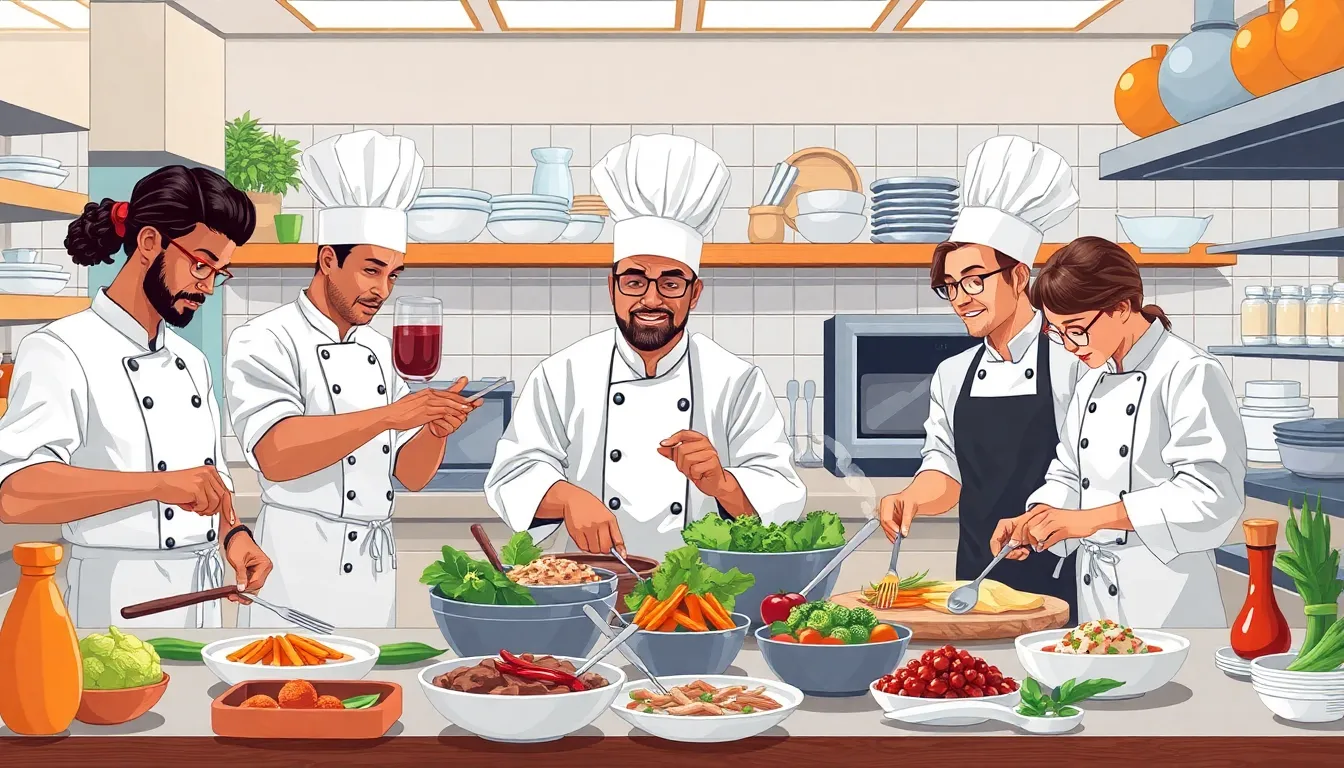Cooking isn’t just about throwing ingredients together; it’s a delicious journey through time. From cavemen grilling mammoth steaks over an open fire to modern chefs whipping up molecular gastronomy masterpieces, the history of cooking is a tale of creativity, survival, and a dash of culinary chaos. Imagine how many burnt offerings were made before someone figured out that a little seasoning goes a long way!
History of Cooking
Cooking’s roots trace back to prehistoric times, marking a significant evolution in human life. Early culinary practices laid the groundwork for contemporary cooking.
Prehistoric Cooking Methods
Early humans utilized various methods to prepare food, including roasting and boiling. Open fires became common for grilling smaller animals and gathering plants. Evidence from archaeological sites shows that prehistoric peoples employed rudimentary tools for cooking. Archaeological data indicates that pottery emerged around 20,000 years ago, allowing for new cooking techniques. Additionally, the use of hot stones for steaming food marked an important advancement in food preparation.
The Discovery of Fire
The discovery of fire significantly transformed cooking practices. Fire enabled cooking beyond raw food, changing taste and texture. Some estimates suggest humans harnessed fire over 1 million years ago, leading to enhanced nutrition. Cooking with fire allowed for the breakdown of toxins present in various plants and meats. This process likely elevated food safety while making it easier to digest, encouraging the consumption of a wider range of ingredients.
Ancient Cooking Practices


Ancient cooking practices laid the foundation for various culinary traditions. These methods influenced diets, cultural practices, and innovations across civilizations.
Cooking in Ancient Civilizations
Cooking techniques varied widely in ancient civilizations. Egyptians relied on baking and fermentation, producing bread and beer. Greek society employed grills and boiling methods, which created a diverse array of recipes using local ingredients. Chinese cooking emphasized steaming and stir-frying with metal utensils. Furthermore, Mesopotamians made significant contributions by developing clay ovens, allowing for more controlled cooking techniques. Each civilization showcased unique practices that reflected available resources and agricultural products.
The Influence of Agriculture on Cooking
Agriculture transformed cooking methods significantly. The domestication of crops allowed cultures to create stable food sources, such as grains and legumes. As grains became staples, baking practices expanded, leading to various bread types. This agricultural shift introduced food preservation techniques like drying and fermenting, essential for long-term storage. Seasonal availability of ingredients shaped cooking styles and regional dishes. Overall, agriculture fueled culinary innovation, enabling societies to develop flavors and techniques that defined their identity.
The Evolution of Cooking Techniques
Cooking techniques evolved significantly throughout history, reflecting the creativity and ingenuity of different cultures.
Introduction of Tools and Utensils
The introduction of tools and utensils marked a new era in cooking practices. Early humans utilized simple implements such as sticks and stones for preparing food. Over time, the creation of more specialized tools enhanced these practices. Cooking pots and knives emerged, allowing for more precise cutting and better heat retention. Pottery from around 20,000 years ago enabled boiling and baking methods to develop, leading to a variety of dishes. Innovations in utensils, such as ladles and spatulas, further streamlined food preparation. These advancements laid the groundwork for diverse culinary techniques and contributed to the complexity of flavors in modern cooking.
The Impact of Trade on Ingredients
Trade had a profound impact on cooking, introducing new ingredients and flavors across regions. As civilizations began to exchange goods, spices and herbs became valuable commodities. The Silk Road facilitated the transfer of unique ingredients, such as pepper from India and cinnamon from Ceylon. Culinary practices transformed as cultures integrated these new tastes into their traditional dishes. The introduction of sugar, tomatoes, and chili peppers from the Americas revolutionized European cooking methods. Additionally, the exploration of the world expanded access to various foods, enriching diets and fostering creativity in preparation. This exchange of ingredients has significantly shaped global cuisine as it exists today.
Culinary Traditions Around the World
Culinary traditions vary greatly across the globe, reflecting the distinct environments and cultures of each region.
Regional Cooking Styles
Regional cooking styles showcase unique flavors and techniques rooted in local ingredients. Italian cuisine features fresh herbs, tomatoes, and olive oil, while Indian food emphasizes spices like cumin and coriander. French cooking emphasizes precision and classic techniques, and it reincarnates age-old methods like sous-vide and baking. In contrast, Mexican cuisine celebrates vibrant flavors, often using corn, beans, and chili peppers. Observing these culinary styles reveals cultural connections, including how geography and climate influence available ingredients and cooking practices.
The Role of Culture in Food Preparation
Culture shapes food preparation through traditions, rituals, and social practices. Festivals often create opportunities to showcase regional dishes that carry historical significance. Family recipes passed down generations reinforce community bonds while preserving culinary heritage. Cooking methods, such as fermentation in Korean cuisine, enhance flavors and reflect cultural identities. Additionally, the communal aspect of food preparation plays a crucial role, as many cultures engage in shared experiences that strengthen relationships. Ultimately, culture and food intertwine, forming rich narratives celebrated worldwide.
Modern Cooking Innovations
Modern cooking innovations reshape culinary landscapes worldwide. Techniques such as sous-vide allow chefs to cook food in vacuum-sealed bags at precise temperatures, enhancing flavor and texture. The use of molecular gastronomy involves scientific processes to manipulate ingredients at a molecular level, resulting in unique dining experiences.
Technology plays a significant role in contemporary kitchens. Smart ovens, equipped with advanced sensors, adjust cooking times and temperatures automatically. These appliances streamline meal preparation and reduce the risk of overcooking. Additionally, digital recipe apps provide step-by-step guidance, making it easier for home cooks to experiment with new techniques.
Plant-based cooking has gained popularity, driven by health and environmental concerns. Innovations in food processing have created meat alternatives that mimic the taste and texture of traditional meats. These developments support a growing trend towards sustainable eating practices.
Food delivery services revolutionize dining experiences. Consumers can access a wide variety of cuisines from the comfort of their homes. These platforms foster culinary exploration and support small businesses, expanding culinary choices for many people.
Fermentation has seen a resurgence, with chefs experimenting with probiotics and traditional preservation methods. This technique not only enhances flavor but also promotes gut health. Chefs incorporate fermented elements into dishes, showcasing creativity in modern menus.
Culinary competitions highlight innovations, pushing chefs to explore new ideas and techniques. Shows such as “Top Chef” and “MasterChef” inspire home cooks to elevate their skills, embracing creativity and experimentation. These platforms also emphasize the value of diverse cultural influences in cooking.
These trends reflect broader societal shifts towards health-conscious and sustainable eating. Innovations in cooking not only enhance culinary experiences but also play a crucial role in shaping future food practices.

